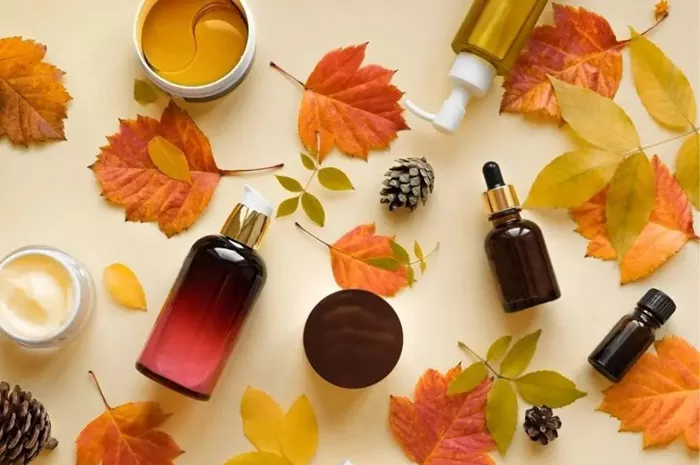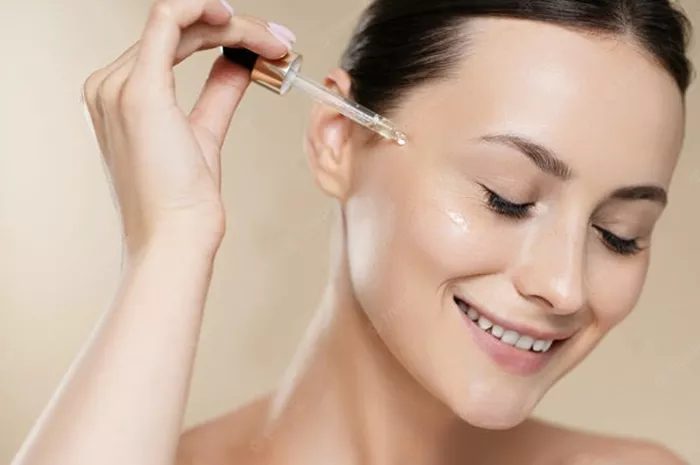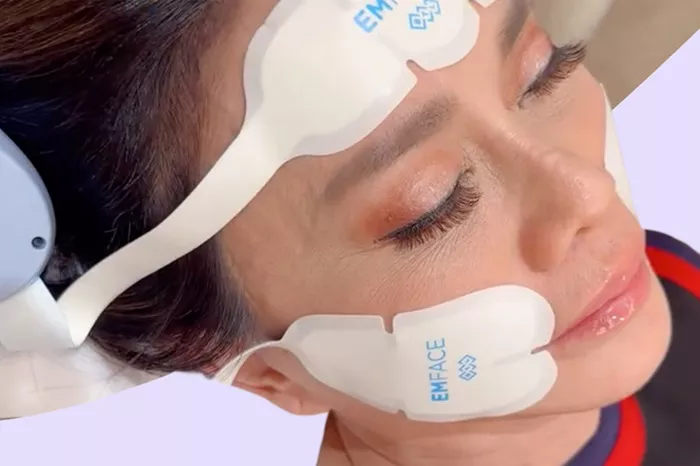As the summer fades, the skincare landscape is shifting once again. Dermatologists have recently championed retinal as a more effective alternative to retinol for reducing pigmentation, fine lines, and breakouts. New injectable polynucleotides have also emerged as contenders in the battle against dark circles. With the arrival of autumn, fresh trends are set to reshape skincare routines.
The transition into fall often brings changes to our skin due to dropping temperatures, central heating, and decreased vitamin D levels. This seasonal shift frequently results in dryness, prompting many to search online for solutions such as “best moisturizers for dry skin” and “how to treat dry skin on the face.” Industry experts are responding with trends focused on maintaining a healthy skin barrier during these challenging months.
Renowned skin specialist, nutritional scientist, and founder of her skincare brand, Kat Burki, shares the key autumn skincare trends that everyone can benefit from:
1. Reverse Double Cleansing
While double cleansing has become a staple recommendation for evening skincare routines, Burki advocates a reversal of the traditional method. Typically, the first step involves using a micellar water, oil, or balm cleanser to dissolve makeup and impurities, followed by a gel or foam cleanser for a thorough cleanse. Burki suggests starting with a gel cleanser, such as her KB5 Calming Gel Cleanser (£40), followed by an oil cleanser. “You don’t want to wash away those nutrients,” she explains. This approach can be particularly beneficial for dry skin.
For those prone to breakouts or with oily skin, she recommends opting for a non-pore-clogging cream cleanser instead of an oil-based product. Options like The Ordinary Glycolipid Cream Cleanser (£11.10) and No7 Derm Solutions Comforting Cream Cleanser (£14.95) are well-rated choices.
2. Vitamin C Derivatives
If traditional vitamin C serums have left your skin feeling irritated or overly dry, you may be reacting to L-ascorbic acid, the purest form of vitamin C. While it is highly effective in boosting collagen production and combating environmental stressors, it can be too potent for some skin types. Burki advocates for using vitamin C derivatives, which are more stable and gentler on the skin.
For instance, the Vitamin C Intensive Face Cream (£116) features STAY-C, a stable form of vitamin C that converts to ascorbic acid in the skin. This allows you to reap the benefits of vitamin C without the irritation. More affordable alternatives include The Inkey List C-50 Serum (£16) and The Ordinary Ascorbyl Glucoside Solution 12% (£14.10).
3. The End of Collagen Skincare
As cooler weather approaches, many people may turn to collagen-infused products to combat dryness and dullness. However, Burki points out that collagen molecules are too large to penetrate the skin effectively. Instead, she recommends focusing on vitamin C serums to stimulate collagen production from within. Pairing these serums with a high-factor sunscreen will provide additional protection against collagen-depleting UV rays.
4. Souped-Up Moisturizers
To counteract the drying effects of cold weather, Burki suggests seeking out moisturizers enriched with hydrating ingredients like hyaluronic acid, glycerin, and ceramides. A standout ingredient to look for this autumn is astaxanthin, which Burki describes as a “serious moisturizer.” Research indicates that astaxanthin can improve conditions like dryness and itchiness while boosting skin elasticity and reducing fine lines.
Burki’s Bio Correcting Face Cream (£390) features astaxanthin along with antioxidant vitamins, squalane, and other nourishing ingredients. For more accessible options, check out Kopari Bright as Day Sheer Mineral Sunscreen SPF 50 (£36) or Drunk Elephant Bora Barrier Repair Cream (£62).
5. Rethinking Hyaluronic Acid
Traditionally, applying hyaluronic acid (HA) on damp skin is recommended to maximize hydration. However, Burki challenges this notion, stating that HA can be applied effectively to dry skin as well. Recent studies have shown that hydration levels remain consistent regardless of whether HA is applied to wet or dry skin. To streamline your routine, follow your HA serum with a moisturizer for optimal results.
6. Scaling Back the Niacinamide
Niacinamide (vitamin B3) is widely praised for its ability to regulate oil production and minimize large pores. However, high concentrations can be irritating, especially for those with dry skin. Burki advises using products with 2% niacinamide or less during the autumn months. Her BioCell Correcting Serum (£240) is a good option, while The Ordinary Soothing and Barrier Support Serum (£17.30) offers a more budget-friendly alternative.
7. A New Way to Exfoliate
Glycolic acid is a popular chemical exfoliator, but it can be harsh on the skin if overused. Burki prefers gentle fruit enzyme exfoliants, which provide similar benefits without damaging the skin barrier. She recommends using enzyme-based cleansers or essences to help renew skin cells while maintaining a balanced skin microbiome. Products like Burki’s PH+ Enzyme Essence (£92), Kate Somerville ExfoliKate Cleanser Daily Foaming Wash (£39), and Coco & Eve Fruit Enzyme Cleanser (£19) are excellent choices for a gentle exfoliation routine.
As autumn approaches, implementing these expert-recommended skincare trends can help keep your skin healthy, hydrated, and glowing through the seasonal transition.
Related Topics
Get Your Skin Ready for a Radiant Glow This Festive Season



































